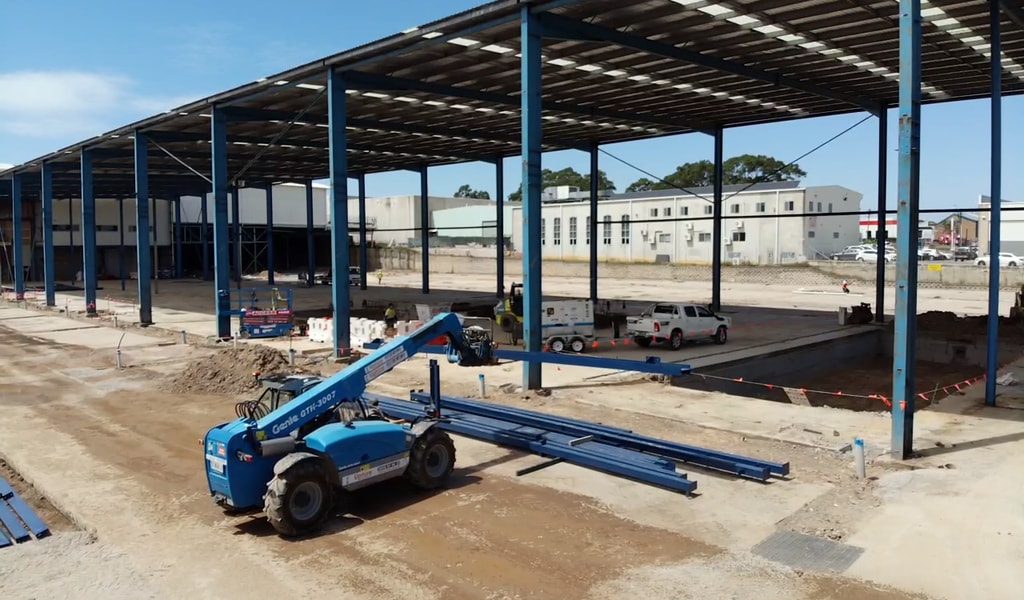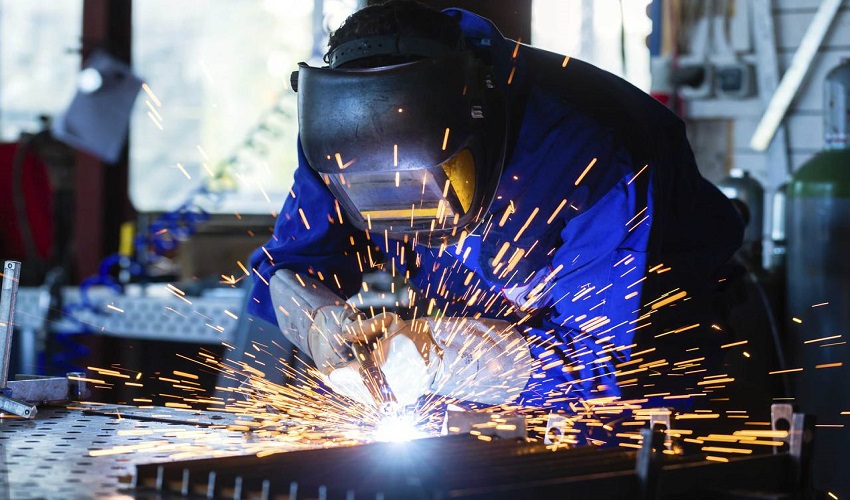Leading Approaches for Optimizing Steel Manufacture Processes for Maximum Efficiency
From meticulous layout preparing to accepting advanced technologies, the mission for optimal efficiency in steel fabrication involves a complex approach. Let's discover how these techniques can revolutionize steel construction procedures, paving the method for unmatched efficiency and competitiveness in the market.
Effective Layout Planning
In the realm of steel manufacture procedures, efficient and tactical design preparation plays a crucial role in simplifying production operations and optimizing functional productivity. The format of a steel fabrication center directly affects the performance of operations, material flow, and employee productivity. By meticulously designing the plan of machinery, workstations, storage space areas, and product handling tools, business can significantly minimize unneeded activity, reduce material handling times, and maximize the overall manufacturing procedure.
A reliable design plan thinks about aspects such as process series, distance of workstations, product handling courses, and safety laws. It intends to produce a rational and structured flow of tasks from raw material consumption to the end product send off. With effective format planning, firms can eliminate traffic jams, lower production downtime, and enhance the overall functional efficiency of the steel construction process.
Furthermore, a well-thought-out layout strategy enables far better utilization of offered room, boosted communication in between employees, and enhanced security techniques within the center. Generally, investing time and sources in establishing an efficient layout strategy can generate substantial advantages in regards to increased productivity and expense financial savings for steel construction services.
Advanced Reducing Technologies
Making use of cutting-edge innovations in steel manufacture procedures enhances accuracy, performance, and total production top quality. Advanced cutting technologies play an essential function in simplifying operations and enhancing the construction process. One of one of the most famous developments in this field is the implementation of laser cutting systems. Laser cutting deals unequaled precision, enabling detailed layouts and complex shapes to be cut with minimal product wastage. Additionally, plasma reducing technology has actually additionally changed steel fabrication by allowing swift and exact reducing with electrically conductive materials. This technique is especially reliable for reducing thick steel plates with rate and accuracy. Water jet cutting is an additional cutting-edge technology that utilizes a high-pressure stream of water to cut with different sorts of materials, including steel, with outstanding precision. By integrating these advanced reducing technologies into steel construction procedures, suppliers can dramatically raise performance, decrease production times, and ultimately boost the quality of their products.
Automated Welding Solutions

Among the key advantages of automated welding systems is their capability to preserve a high degree of precision throughout the welding procedure. The accuracy supplied by these systems ensures that welds are uniform and satisfy the needed specifications, leading to stronger and a lot more reliable metal frameworks. Additionally, automated welding systems reduce the risk of human error, causing fewer issues and revamp.
Additionally, these systems can deal with intricate welding tasks effortlessly, consisting of welding in limited areas or on rounded surface areas. This versatility makes automated welding systems ideal for a wide variety of steel fabrication applications, from massive industrial tasks to intricate custom-made styles. Overall, the application of automated welding systems in steel manufacture processes substantially improves effectiveness, quality, and total job end results.

Inventory Management Solutions
Enhancing functional effectiveness and you can try these out improving processes, efficient supply management options play an essential role in maximizing steel construction operations. By implementing robust supply administration systems, steel construction business can make sure that the appropriate materials are offered when required, lessening interruptions and delays in production schedules. Utilizing innovative software program solutions enables real-time tracking of inventory degrees, making it possible for accurate forecasting of material demands and protecting against stockouts or overstock circumstances.
Moreover, stock management options aid in lowering lugging costs linked with excess stock and enhance cash money flow by straightening stock degrees with real demand. By classifying visit products based on usage regularity and criticality, producers can prioritize purchase and storage room allowance, even more boosting operational performance. Additionally, applying barcode or RFID technology promotes precise stock monitoring and streamlines the monitoring of material motions within the center.
Constant Refine Enhancement
To build upon the gains made through reliable inventory administration remedies, the emphasis now changes towards driving continual process enhancement within steel construction operations. Constant process improvement is an organized strategy aimed at boosting performance, decreasing waste, and increasing total high quality throughout the manufacture procedure. By carrying out a culture of continuous enhancement, steel construction companies can determine bottlenecks, streamline workflows, and enhance resources to optimize productivity.
One key aspect of continual procedure improvement in steel fabrication is the routine review and evaluation of manufacturing processes. This entails event feedback from workers, keeping an eye on key efficiency signs, and identifying locations for enhancement. By leveraging data-driven understandings, firms can make enlightened decisions to drive meaningful adjustments that favorably check that affect procedures.
In addition, taking on lean production concepts can substantially add to process renovation in steel manufacture. steel fabricators melbourne. Techniques such as value stream mapping, five organization, and Kaizen occasions can aid remove non-value-added tasks, standardize procedures, and cultivate a culture of technology and continual learning within the organization
Conclusion
In verdict, maximizing steel construction procedures for optimal efficiency calls for careful planning, making use of advanced cutting modern technologies, carrying out automated welding systems, handling supply effectively, and continuously improving procedures. By integrating these approaches, manufacturers can improve efficiency, lower costs, and improve overall efficiency in the steel fabrication market.
Through efficient design preparation, business can eliminate traffic jams, reduce manufacturing downtime, and improve the general functional effectiveness of the steel manufacture process. steel fixing.
Using sophisticated innovations in steel fabrication procedures enhances accuracy, effectiveness, and general manufacturing quality. By including these innovative reducing innovations into steel manufacture processes, suppliers can substantially increase performance, minimize manufacturing times, and eventually boost the top quality of their products.
Overall, the application of automated welding systems in steel manufacture processes significantly improves performance, high quality, and total job results.
One secret element of continuous process enhancement in steel manufacture is the regular evaluation and analysis of manufacturing processes. (Alpha reo)